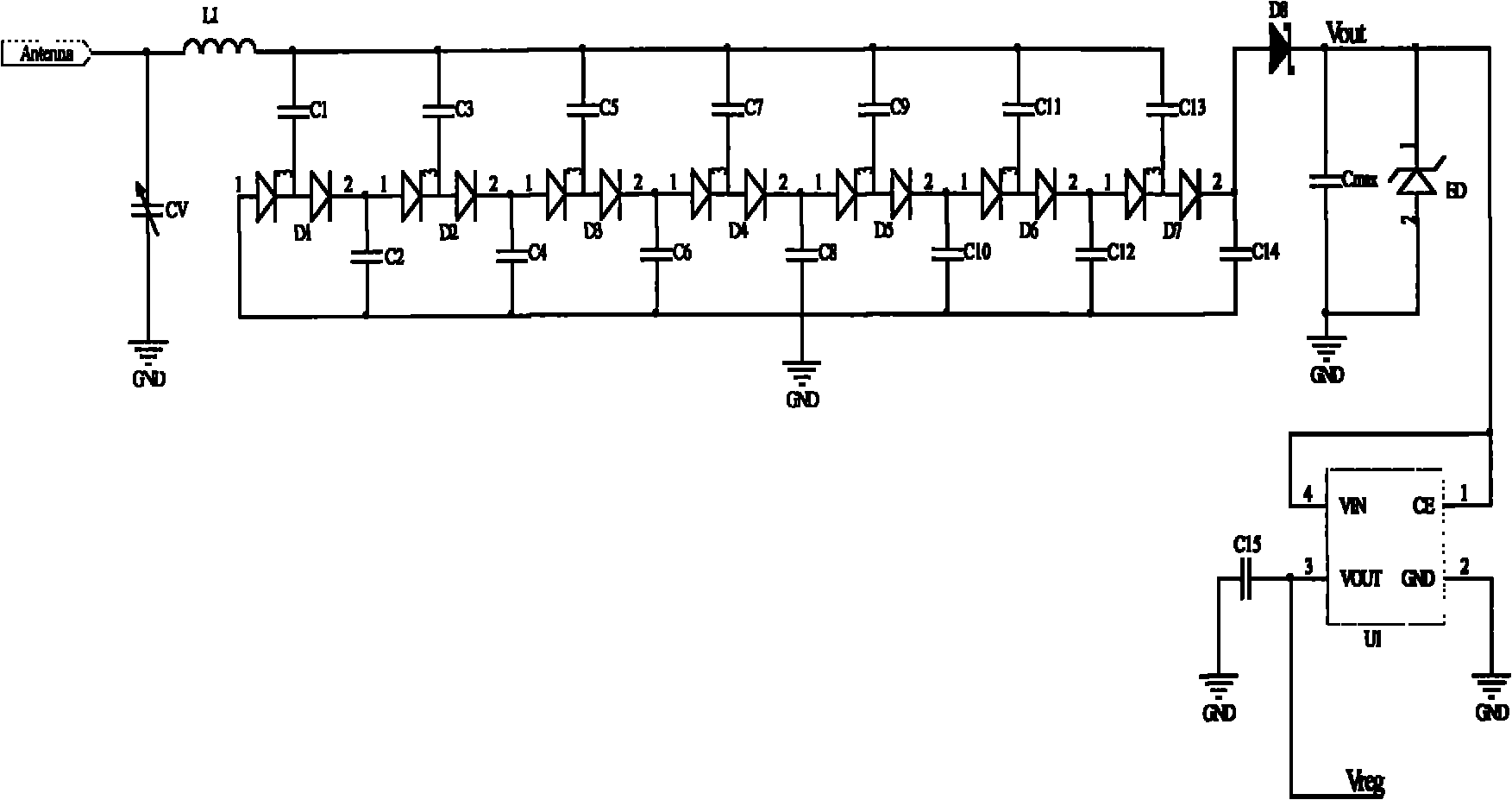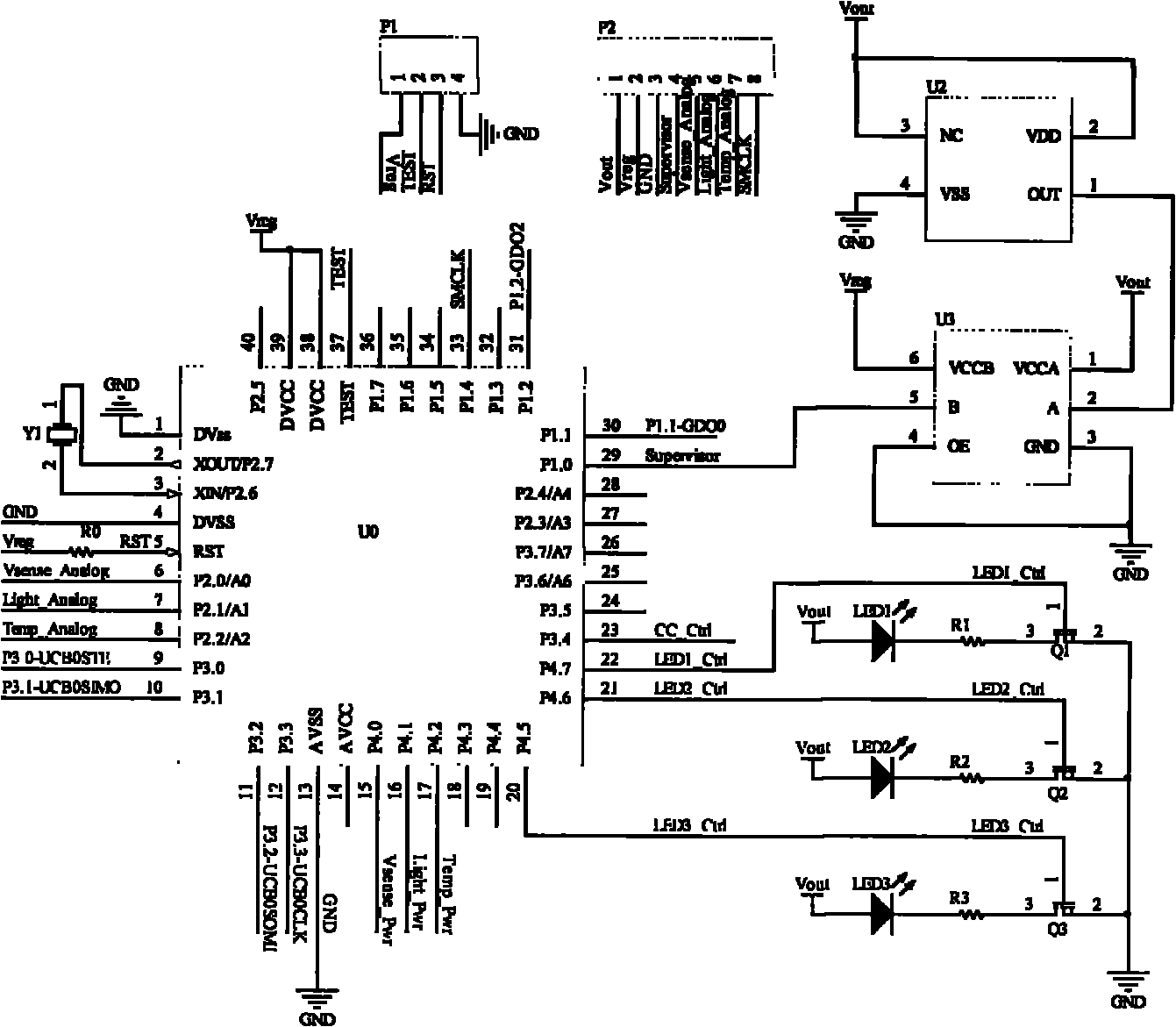Wirelessly charged sensor node
A sensor node and wireless charging technology, applied in current collectors, instruments, electric vehicles, etc., can solve the problem of short communication distance between tags and readers, achieve the effect of getting rid of dependence and reducing energy consumption
- Summary
- Abstract
- Description
- Claims
- Application Information
AI Technical Summary
Problems solved by technology
Method used
Image
Examples
Embodiment Construction
[0017] The present invention will be further described below in conjunction with the accompanying drawings and embodiments.
[0018] Such as figure 1 As shown, the overall structural composition of the novel node is described. It is mainly composed of PCB antenna, RF front-end module, microprocessor module, sensor module, and wireless RF module. The PCB antenna is connected to the RF front-end module. The RF front-end module collects energy and connects to the microprocessor module through the voltage regulator sub-module. The microprocessor module is connected to the sensor module through the IO port, and connected to the wireless radio frequency module through the SPI interface.
[0019] The RF energy collected by the PCB antenna is rectified and converted by the RF front-end module and stored in the energy storage capacitor Cmax. Under the action of the voltage stabilization sub-module, the RF front-end module finally outputs a stable voltage Vreg, which provides energy fo...
PUM
 Login to View More
Login to View More Abstract
Description
Claims
Application Information
 Login to View More
Login to View More - R&D
- Intellectual Property
- Life Sciences
- Materials
- Tech Scout
- Unparalleled Data Quality
- Higher Quality Content
- 60% Fewer Hallucinations
Browse by: Latest US Patents, China's latest patents, Technical Efficacy Thesaurus, Application Domain, Technology Topic, Popular Technical Reports.
© 2025 PatSnap. All rights reserved.Legal|Privacy policy|Modern Slavery Act Transparency Statement|Sitemap|About US| Contact US: help@patsnap.com



